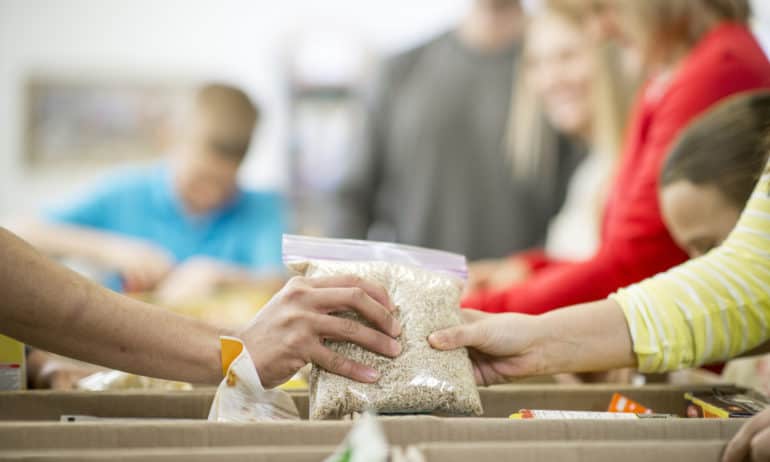Currently, one in four residents in San Francisco and Marin, California, needs food assistance. The SF-Marin Food Bank’s mission is to eliminate hunger in this region by making it as easy as possible for people who are food insecure to participate in food assistance programs.
“Children, seniors, unemployed, and low-wage workers make up the majority of those struggling with hunger,” the Food Bank reports. “Only 14 percent of those receiving food through the Food Bank network are homeless.” From 2007 to 2014 there was a four percent increase in people at risk of hunger in San Francisco and a thirty percent increase in Marin. In total, more than 49,000 Marin County residents require food assistance.
Teri Olle is the Director of Policy and Advocacy at the SF-Marin Food Bank. She is currently serving as the chair of the Food Security Task Force, an organization which advises the city of San Franciso about how to achieve its goal of being hunger-free by 2020. The task force combines representatives from city agencies as well as community-based organizations to make policy and funding recommendations to the city. Her policy and advocacy work with the SF-Marin Food Bank focuses on strengthening and expanding food assistance programs at the city, county, state, and federal levels.
Food Tank corresponded with Teri Olle to discuss her important role at the SF-Marin Food Bank.
Food Tank (FT): The SF-Marin Food Bank conducts much of its own research on hunger. What are some current research areas?
Teri Olle (TO): Missing Meals is an annual analysis of the resources available for low-income residents (under 200 percent Federal Poverty Level) for food. Research covers the categories of personal resources (income that could be expected to be spent on food), nonprofit assistance (for example, Food Bank and others), public programs (for example, CalFresh/SNAP, school meals, and others). The gap between these resource categories and the needed meals are what we call missing. We do not guess as to how people actually find those meals but it gives us a big picture view of the gap between what’s available and what’s needed—and where people are presumably making really hard choices.
FT: How did you first become interested in food advocacy?
TO: I started at the Food Bank working on a project to improve school meals, which combined my professional experience in advocacy with my personal interest in public schools. I have previously worked in environmental health advocacy, including on some agriculture-related issues. Working at the Food Bank has given me a whole other perspective on the food system, especially concerning what I think of as the secondary food system—the one that attempts to meet the needs of low-income residents.
FT: What motivates you to continue pursuing systemic change?
TO: Basic drive for fairness. We can do better.
FT: What can people do to decrease food insecurity in their own city?
TO: (1) Support organizations by donating money and time. (2) Use your VOICE to advocate to elected officials and other leaders about the importance of both public policy and programs (both public and nonprofit) that address food needs of residents.
FT: Can you describe some of the organizations you are working with on advocacy, education programs, and grocery home-delivery?
TO: Locally, I chair the SF Food Security Task Force, which comprises 15 organizations and city agencies that advise the Board of Supervisors on food security and makes policy and funding recommendations. The major nonprofit food organizations sit at or around that table (Meals on Wheels, St. Anthony’s, Project Open Hand, Episcopal Community Services, UCSF General Hospital) as well as all the city departments that have a nutrition component: the Department of Public Health, Department of Aging and Adult Services, Department of Human Services, and the school district, to name a few.
In Marin, we are part of the Marin Food Policy Council, and have leadership roles in that body, including one of our staff serving as the co-chair. Through this role, we work closely with the Department of Health and Human Services to increase CalFresh participation.
At the state level, we work in close collaboration with the California Association of Food Banks and the Alliance to Transform CalFresh (which is focused entirely on, you guessed it, improving CalFresh). We also work with the CA4SSI coalition, which is focused on increasing the Supplemental Security Income benefits for the millions of Californians who receive it (the current benefit level is actually BELOW the poverty line—and for many it’s their only source of income). We often work with the California Food Policy Advocates, which is focused on statewide policy, and we work with our fellow food banks, too, on a number of issues at the state and federal level.
Read more about the important work being done by the SF-Marin Food Bank here or donate to the SF-Marin Food Bank.







